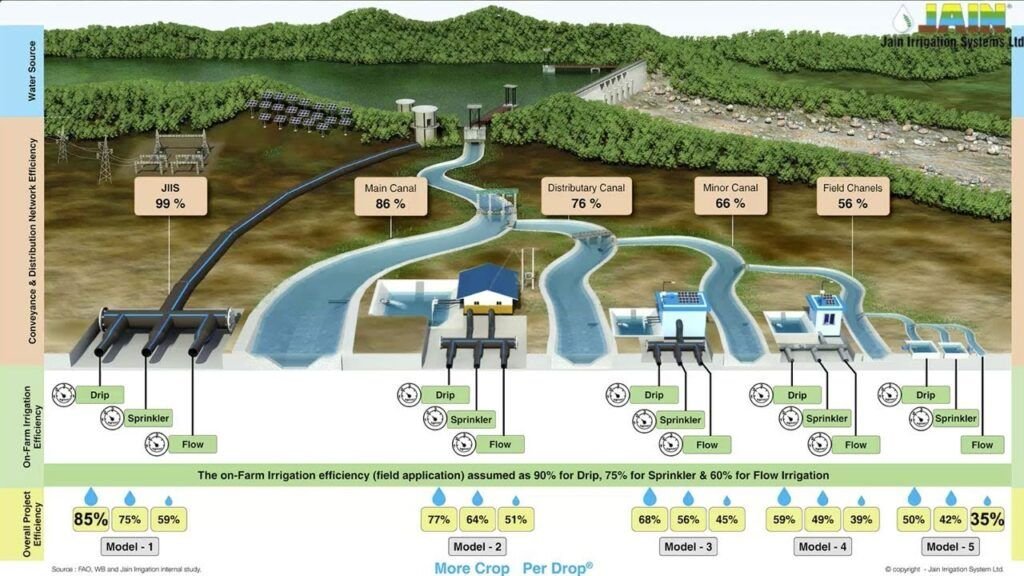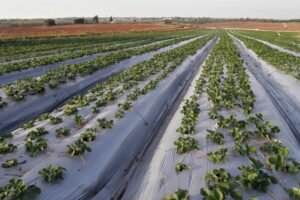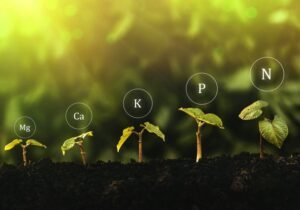India’s Future: Smart Community Irrigation
Water is a ‘renewable resource‘ but still we face water scarcity all over the world. Water is an essential component of life and without it no living being could ever exist. Human beings are very ignorant towards the resources that are depleting at an enormous rate. We always believe that we are always going to have enough water to sustain but the truth is not the same. If we continue wasting water and not use it effectively, then we can for real face the challenges of not having enough water for ourselves.
If we look into certain resources, around 700 million people are already facing a water crisis in their countries. India too, has water scarcity in many states wherein summer season, most of the areas dry up and face a lot of problems due to the unavailability of water. According to the UN, two third of the world’s population will suffer in water stressed regions by 2025.

The world is in an alarming situation due to the rising population. Growth of population is an important factor to look through as it puts pressure on the global food demand. With increasing population, the demand for food supply is also rising which affects the agricultural sector for growing more and more crops in less time. Traditional Agriculture consumes about 70% of the available water globally. According to certain studies, there will be an increase in demand for water of about 50% for agricultural needs by 2050.
So what’s the solution for this ?
The only solution is using a Smart Irrigation system in our agricultural sector which would work with the limited resources effectively.
Here in this article we will study about ‘Smart Community Irrigation’, which is the need of the hour to meet these challenges.
Before moving to community irrigation, let us first understand the other possible reasons for the problem of water.
Other possible Reasons for Water problems

Natural resources are depleting at a high rate but that is certainly not the reason, probably not the main reason for the problem. It’s just that we can bring out the positivity in every negative situation by just acting wisely and smartly. We have limited resources but using the available resources in a wise way could be very effective and beneficial to us.
Traditional farming requires more water in their farms because they have inadequate irrigation features which causes a lot of water wastage. Many farmers or smallholders face a lot of challenges due to lack of capital and markets which force them to adopt unsustainable agricultural practices which further causes the land degradation which then leads to reduction in the per capita availability of arable land.
To deal with these issues, small holders and rural communities need to take some urgent and serious steps for the creation of conductive agricultural ecosystems, so that they thrive to success.
What is Community Irrigation?
Community Irrigation is an approach towards bringing the whole community together to work under the common principle of providing a sustainable and systematic irrigation practice. It focuses on bringing the government and private sector to work together so as to accomplish this goal and sustainably manage all the natural resources and provide the stakeholders with the required infrastructure for performing the agricultural practices in a more sustainable form.

This approach would lead the agricultural sector to a more advanced form where the rural communities would adopt advanced technologies to make their farming better and easier and this would also help to implement the natural resources and certain policies in an effective manner. It helps the farmers to have a control on their agricultural input and providing them a helping hand to secure their future and not letting them battle alone from the challenges in agriculture.
Importance of Community Irrigation
Community Irrigation is an excellent approach towards making the Irrigation factor more advanced and efficient in Agriculture. It not only benefits the individual stakeholder but the community and the entire world as a whole. Agriculture totally relies on water and proper irrigation would lead to adequate agricultural produce.
The main reasons for switching on to this Irrigation practice includes:
- zAvailable water usage are increased to an efficiency of 80-90%
- The use of fertilizers also increases to an efficiency of 80-90%
- The water is distributed in an adequate manner to the entire farm without bothering about the location of the field
- The high efficiency of water helps to irrigate the entire farm with the same amount of available water
- The efficiency of water and fertilizers improves the land fertility and provides better results
- The output of the farm increases because of sustainable farm management techniques
- The standard of farming community improves due to increased production
- The land acquisition cost also reduces and ensures more savings due to the bulk water supply in underground pipelines
Smart Irrigation technologies
The use of technology can never be beneficial in your farm. Rather it requires the knowledge of each technology and applying the correct technology in the best way possible wherever and whenever essential. Agriculture has made way to discover many new technologies for irrigation as water is the most important factor for farming.
The most common of them are:
- Controllers which are in general divided as – Climate based controllers and Soil moisture based controllers.
- Sensors which are divided into –
Controllers
- Climate based controllers – These controllers use local weather data to adjust irrigation schedules, so that the landscape receives the appropriate amount of water. Climate based controllers are also referred to as Evapotranspiration (ET) which is a combination of evaporation and transpiration by the soil surface and plant materials respectively.
- Soil moisture based controllers – These controllers use soil moisture sensors which are placed underground in the root zone of lawns to determine their need for water. Soil moisture controllers show irrigating savings at an average 7
Sensors are used to increase the efficiency of the existing irrigation system and they are more affordable than the controllers.
- Soil moisture sensors – These sensors measure the soil moisture content from the root zone before the scheduled irrigation and can change the cycle if there’s no need of irrigating.
- Rain and Freeze sensors – These sensors interrupt the irrigation cycle during the time of rainfall and freeze events as there’s no need for irrigation at these times.
- Wind Sensors – These sensors interrupt the irrigation cycle if the wind speed exceeds a certain limit because it would decrease the irrigation distribution uniformly across the farm.

Some other Irrigation technologies used in Agriculture
- Drip Irrigation – Drip Irrigation is an irrigation method of planting the crops by allowing water to drip slowly to the roots, either from above the soil surface or buried below, thereby saving water usage and the nutrients too. It is the most efficient irrigation technique used in agriculture with about 95-100% water use efficiency.
Drip Irrigation has the potential to change the economy of global agriculture by producing more quality crops per hectare of land and saving water to a larger extent. It helps the rural communities by producing more content crops, thus reducing poverty and reducing their migration to cities.
- Sprinkler Irrigation – This irrigation system uses sprinklers to irrigate the fields in a controlled manner with the help of a pump under high pressure. This irrigation method is similar to rainfall where the water is released through nozzles placed in the pipes and these pipes are sprayed into air. This method can save water upto 30-50% and is suitable for irrigation where the plant’s population per unit area is high.

- Surface Irrigation – This is an irrigation technique where water is distributed over the surface of the soil either in the form of basin irrigation or furrow irrigation.
- Basin Irrigation – This method of irrigation is suitable for flat areas of lands surrounded by bunds where these bunds block the water from entering the adjacent fields. This method is used for crops that remain in water for extended periods such as pastures, banana, citrus, tobacco.
- Furrow Irrigation – This irrigation method is used for crops that cannot withstand water logging and is only preferable to row crops. Here, the water flows from the field channel using small discharges advancing down the field in slopes (flat or gentle slopes) through furrows. Example: Maize, Soyabean, Sunflower, Sugarcane.
Future of Community Irrigation
Community Irrigation is an extensive approach towards making the agricultural industry more advanced and easier and with the advent of above mentioned technologies in the irrigation system, it has led to a more secure and efficient way of farming. The major factor of agriculture depends upon irrigation and when irrigation is sorted then the whole agriculture is sorted.

The irrigation techniques have made a way forward in the agricultural sector and it is being used by many farmers. Traditional farming has now been developed and is now transforming into digital agriculture where the digital techniques are being used by lots of farmers, making it a better scope for the future.
‘Netafim’ is one such organization who is constantly working on community irrigation projects of which ‘Netafim’s community drip irrigation project’ in Ramthal, India is one of the largest community projects in the whole of Asia and has also opened the gates for other community projects too. The organization has trained teams who teach the local farmers how to use Precision irrigation in their farms and increase their crop productivity, changing their lives for the better.
The future of water is somehow at risk but through research and implementing good water management practices and following certain guidelines, we can successfully achieve the solution for the water crisis.




